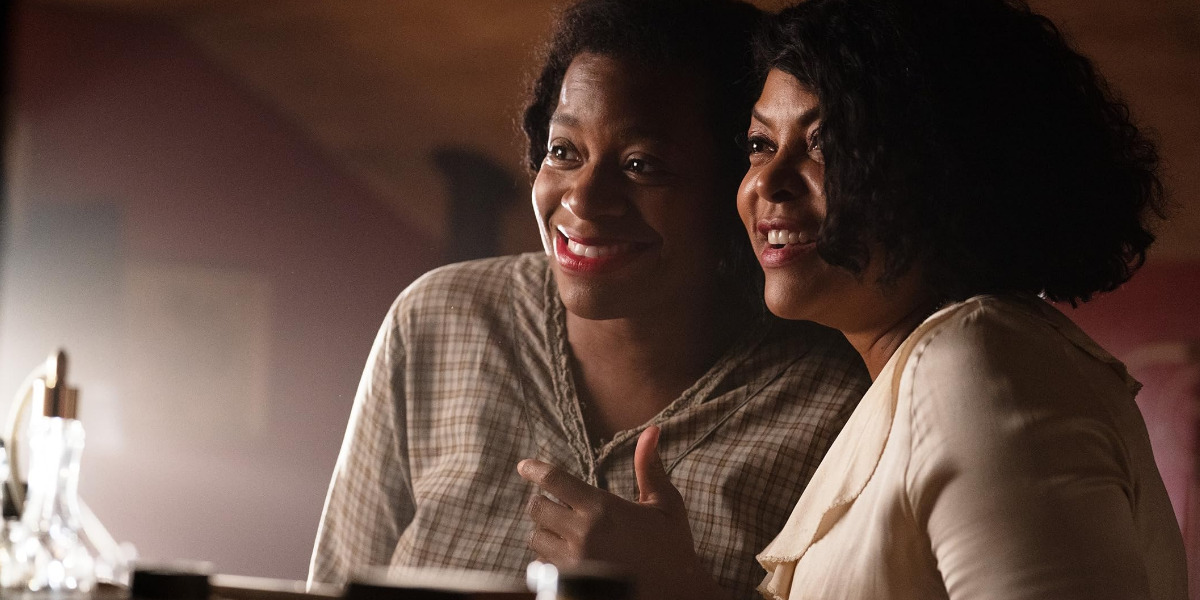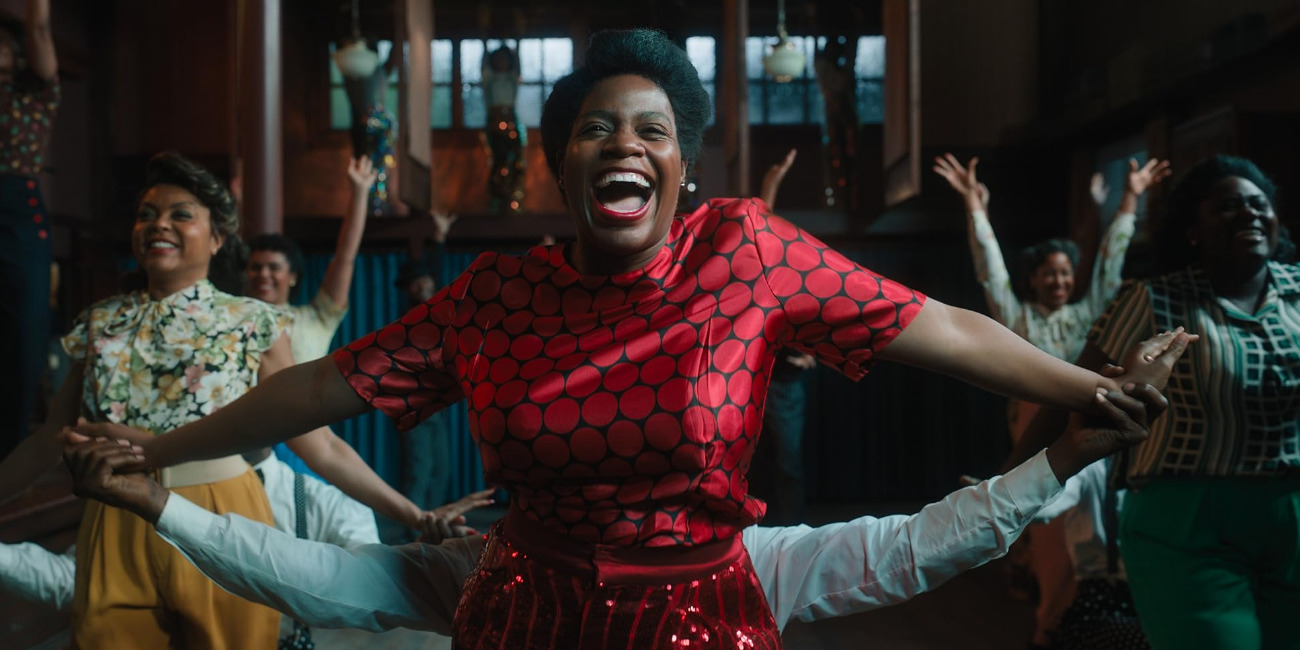Blitz Bazawule’s musical film, ‘The Color Purple,’ brings a celebration of life and survival to the screen through the moving story of an African-American woman as she makes her way through rural Georgia during the early 1900s. Celie Johnson grew up abused, tormented, and violated by her father from a young age. The trauma follows her into her teenage years when she’s separated from her closest companion, Nettie, her younger sister, and married off to Mister, an abusive older man. However, as the woman grows and makes new acquaintances with fellow Black women, Shug Avery and Sofia, their love and support help her regain her happiness and find her identity.
The film deals with a heavy subject matter but focuses on the underlying joy that becomes Celie’s saving grace as she faces every unfair trial and tribulation that life sends her way. Thus, her narrative remains an ode to Black women, their struggles, and most importantly, their persevering, lively spirit. As such, given the film’s realistic themes and historical setting, which remains instrumental in its narrative, Celie and her story may leave people wondering whether it is based on a true story.
An Adaptation of a Tony-winning Broadway Musical
Although ‘The Color Purple’ is not based on a true story, the musical film certainly has a few culturally significant origins behind it. The first layer to peel back remains in the popular eponymous stage play by Marsha Norman, with Brenda Russell, Allee Willis, and Stephen Bray helming the music front. The stage play ran from 2005 to 2008, earning LaChanze, the actress who essayed Celie’s character in 2005, a Tony for Best Actress. A few years later, it returned for a revival in 2016-2017, wherein it snagged the Best Revival Tony in 2016.

As such, the stage play that remains one of the base inspirations for Bazawule’s film already carries a significant reputation within cultural spaces. Thus, it was only natural progression that the play was adapted for the screen in a new light and for a new audience. Nevertheless, the film maintains authenticity to its roots, utilizing many of its original songs in its ultimate soundtrack.
Furthermore, Bazawule and his casting team returned to a few familiar faces, like Fantasia Barrino and Danielle Brooks, who previously partook in personifying their respective ‘The Color Purple’ character’s on-stage narratives. Nevertheless, while the story’s pop-culture presence certainly helped envision Bazawule’s version, it also proposed a pivotal challenge by compelling the filmmaker to find ways to make the story his own.
A Novel By Alice Walker And Spielberg’s Previous Cinematic Adaptation
The mid-2000s stage play that Bazawule directly adapts in his film is based on the 1982 novel, ‘The Color Purple,’ by Alice Walker. The book remains the source material for all its future adaptations, including Steven Spielberg’s 1985 drama film of the same name. Consequently, the 2023 musical is no exception and remains tied to Walker’s work in its origin.

As it would turn out, the same helped Bazawule decide on the defining factor of his own iteration of Walker’s book. For the filmmaker, the author’s work was sacred, a “hallowed ground.” Thus, he wanted to be able to add something substantial to the conversation with his own adaptation. In order to find that distinguishing substance, the filmmaker took to the book to mine for inspiration.
Bazawule found his lightning rod within the very first sentence of ‘The Color Purple,’ a book mostly written in epistolary format, as Celie’s letters addressed to God. “Anyone who is writing letters to God has an imagination, period,” said the filmmaker in a conversation with Deadline.
“It also made it clear to me we often miscategorize people who have been through abuse and trauma as deeply docile and waiting to be saved,” expanded Bazawule. “The reality is nothing could be further from the truth. Everyone who has been through trauma and abuse is constantly trying to work their way out of it in their head. We just don’t have access to their headspace.”
As a result, ‘The Color Purple’ saw its rebirth within Bazawule’s film as an exploration of joy in self-discovery, female solidarity, romance, and survival. The same also helps the musical set itself apart from Spielberg’s rendition of it, starring Whoopi Goldberg, Oprah Winfrey, and Danny Glover. While the latter film is revered within the Black Community and shares cultural significance alongside Walker’s book, it also saw its occasional criticism, fair and otherwise.
Actress Taraji P. Henson, who embodies Shug Avery in Bazawule, highlighted one such criticism in an interview with Hollywood Reporter. “The first movie [Spielberg’s ‘The Color Purple’] missed culturally. We don’t wallow in the muck. We don’t stay stuck in our traumas. We laugh, we sing, we go to church, we dance, we celebrate, we fight for joy, we find joy, we keep it. That’s all we have.”
Walker’s Work and Its Roots in Reality
While Bazawule’s ‘The Color Purple’ undeniably draws from its predecessors, its sense of realism is entirely inherited from the authenticity of Walter’s novel. Like all its iterations, Walter’s ‘The Color Purple’ is also a fictional story without any tangible connection to real-life people or events. However, the book’s subject matter and Walker’s approach to it remain reminiscent of reality in several nuanced ways.

Walker first came up with the idea for ‘The Color Purple’ as a manifestation of her love for her grandparents. Therefore, even though the book is not autobiographical to Walker or her family’s history, it harvests much inspiration from it. “A lot of the things in ‘The Color Purple’ happened to people in my family long before I was born,” said Walker when she discussed her book with Today. “My grandmother was murdered by a man who wanted to be her lover. It really influenced my imagination because I really missed her.”
Likewise, Walker also drew from her grandfathers, from both sides of her family, who were each “mean” in their life to their children as well as wives. Nevertheless, by the time the men reached old age when Walker came to know him, her grandfathers had transformed into sweet men. “[I mean], I wanted to write in such a way that people could see how you can transform,” The author told Bill Moyers. “And that is what happens in that novel [‘The Color Purple’], there’s transformation.” She added, “And beyond that, there is the transformation of Celie from someone who believes in a totally inaccessible deaf God to the god of her sister, herself, and nature. So, I was working on those two levels specifically.”
As a result, Walker created ‘The Color Purple,’ a rich exploration of race, femininity, sexuality, and the point where each of these social sectors overlap in Celie, a Black female lesbian. Therefore, the original ‘The Color Purple,’ and every subsequent adaptation, continues to have rich roots in reality as an innate side-effect of its subject matter, despite its lack of basis in a specific real-life event or autobiography.
Read More: Best Historical Movies on Netflix


You must be logged in to post a comment.